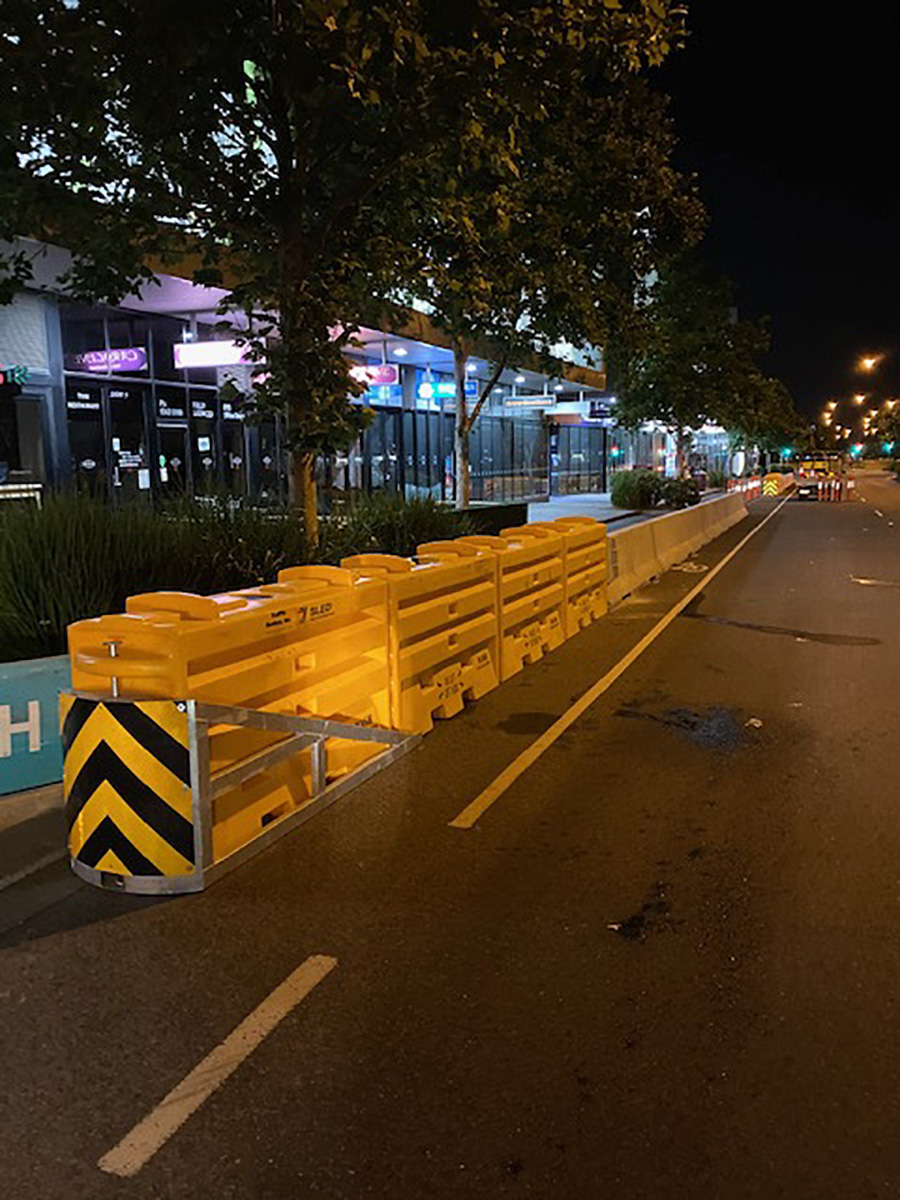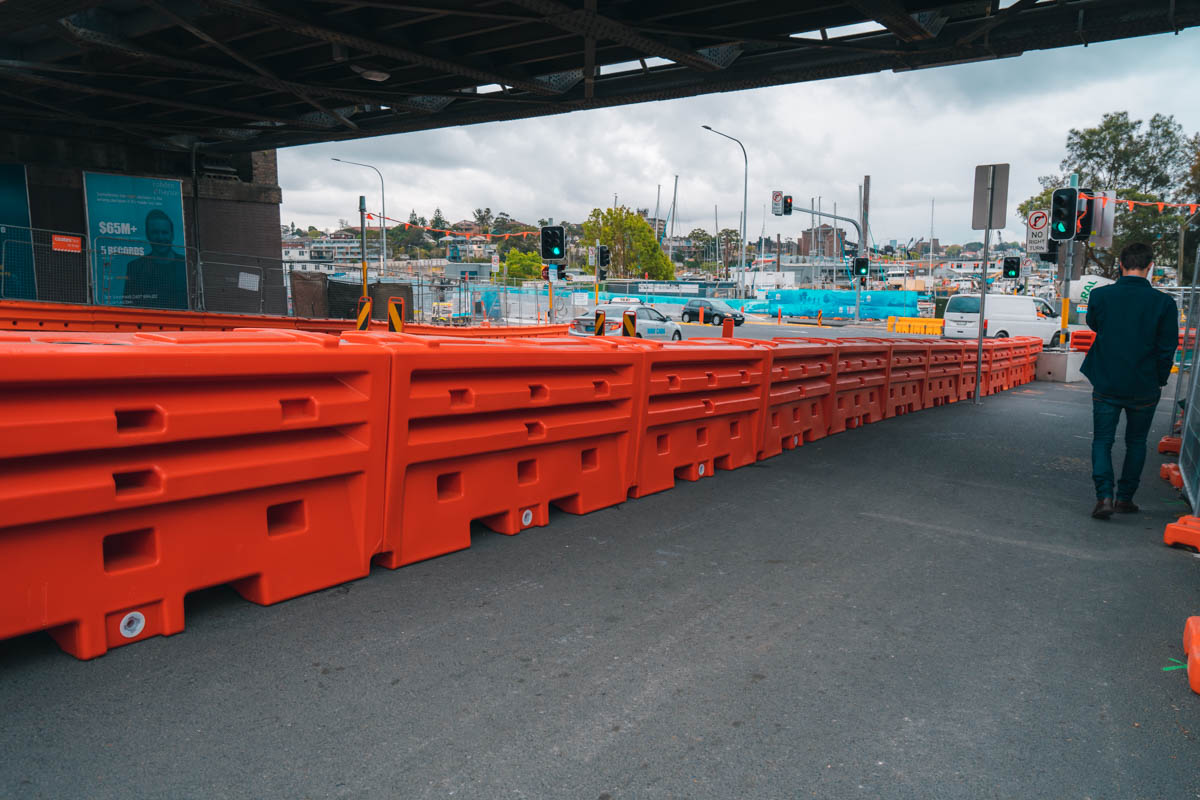Types of highway barriers for road infrastructure projects

Highway and freeway barriers are tough, durable and come in a range of different types.
For infrastructure contractors working on highway projects, tough roadside safey barriers are critical.
Road safety barriers are rugged barricades made from concrete, steel or plastic. These highway barriers can often be seen on road and infrastructure projects where construction crews are building new bridges, duplicating highways, constructing new lanes and similar works.
Whilst steel guardrails and wire rope barriers are common choices for permanent installations, temporary barriers are generally heavy units made from solid materials.
Highway barriers can:
- Reduced the incidence of head-on crashes
- Protect workers by providing a safety zone between them and fast moving traffic
- Deflect out of control vehicles back in line with traffic, instead of vaulting them over the barrier
- Help deter motorists from making dangerous overtaking manoeuvres or illegal u-turns
- Indicate the entry to a worksite
- Protect staff parking areas on a worksite from being hit by earthmoving equipment
In essence, they are designed to protect workers from the impact of out of control vehicles that could potentially mount the kerb or the median strip and plough into the worksite.
You might spot them everywhere on your daily commute, but how do you know which highway barriers are best for your roadwork or infrastructure project?
Let’s take a look at some of the common types of highway barrier systems and what they are designed for.

Types of temporary roadside safety barriers
Steel highway barriers
Metal road barriers are becoming more popular as an option for roadwork crews working in the road corridor. This is because some models on the market feature one of the highest possible MASH ratings, being rated at TL-4.
This rating refers to the ability of the roadside safey barriers to deflect and control out of control vehicles, and generally the higher the MASH rating, the faster the speed zone it can be used in. This makes steel barriers a good choice for the fastest road speeds such as those found on freeways, motorways and highways.
Steel road barriers are generally sold in 6m long units which are easy to install using a T shaped connecting pin.
Concrete barriers
These roadside safey barriers are one of the most common to be used around temporary road work, new road construction and infrastructure sites. Also known as jersey barriers, these barriers are TL-3 rated making them suitable for use on most Australian highways.
Jersey barriers are constructed with a steel bar running through the middle of the concrete, giving it extra strength and rigidity and helping to link all of the barriers together in a long line.
Plastic jersey barriers
Barriers made from polypropylene or blow moulded plastic are generally only suitable for lower speed areas. This limits their use on highways or faster speed roads, as many of these barricades are rated to a maximum of 70km/hr. This means they are probably not the best choice for highway use, as speeds would generally be well above this level.
However, you might see plastic barriers used on worksites at the side of a highway: they are a great allrounder and can be used to create temporary worksite carparks and walkways.
They are also used to barricade items such as power poles or electrical boxes so that worksite plant such as excavators does not accidentally bump into these obstacles.

Choosing approved highway barriers
When deciding what type of highway barrier to buy for your site, you should base your decision on factors including traffic speed, types of vehicles (trucks vs cars), the width of the median or verge, the number of lanes, and whether the area is a frequent crash site or black spot. Installation and maintenance costs are also a factor for consideration - but safety should always guide your decision.
With all barriers, it’s important to check the local road authority regulations and ensure the highway barrier you choose is approved for use in that state.
These regulations can differ from state to state so always double check with the road authority, the local council, and Austroads if necessary. Barriers used in Australia should also meet Australian Standards AS/ANZ 3845.1: 2015 - Road Safety Barrier Systems.
Most applications also require barriers to have a MASH rating, which stems from a series of full scale tests to determine how the barrier will perform under stress and in the event of an impact with cars or trucks. Austroads has a list of roadside safety barriers here that are recommended for use by the various State road authorities, each showing their MASH test level.
Where to position roadside safety barriers
In most cases, barriers would be positioned either in the median or on the verge.
In the case of wide freeways, work often takes place in the centre of the median area, and so a length of barriers is needed on either side to protect workers from vehicles travelling in both directions.
Median barriers can also be used to separate traffic streams travelling in opposite directions. When used in a temporary fashion, median barriers ensure that opposing traffic flows stay apart, especially where centre islands or permanent delineation structures are yet to be built.
For barriers placed along the verge area, you should always follow the manufacturer’s guidelines and road authority guidance material about how and where to install them.
All Australian approved highway barriers have documentation that notes the minimum length of a run of barriers, how far away from the traffic they should be placed, how close workers can get to them on the worksite side, and what crash cushions are approved for use with them. (Crash cushions are safety features that are installed at the leading end of a length of barriers, providing some cushioning to an out of control vehicle.)
Installing highway barriers properly is critical to ensuring that they perform as intended in the unfortunate event of a vehicle crash.
Buy temporary highway barriers at Jaybro
Take a look at our range of highway barriers here or give our Fortress Fencing team a call for pricing and delivery information.
 Sign In
Sign In 

